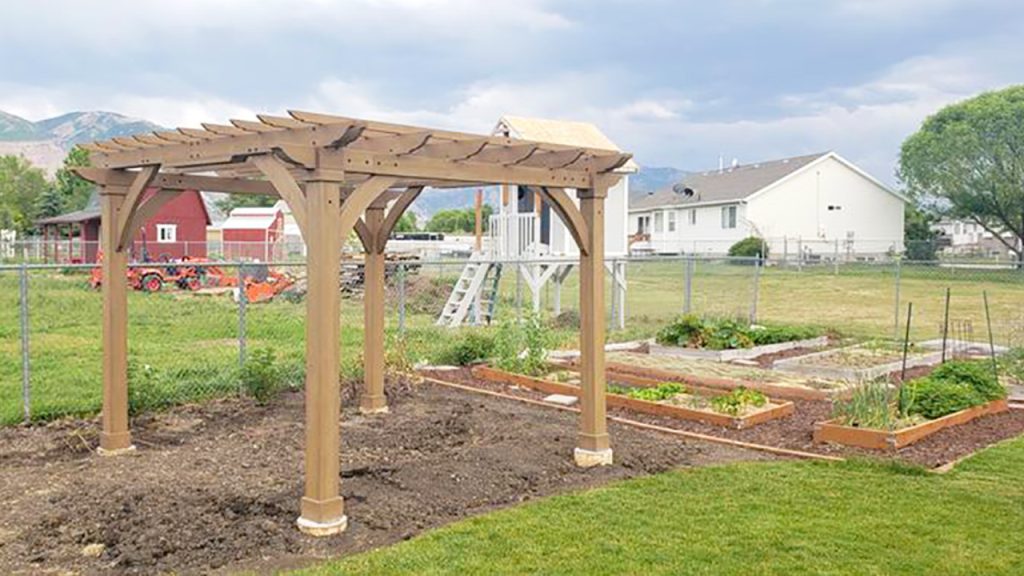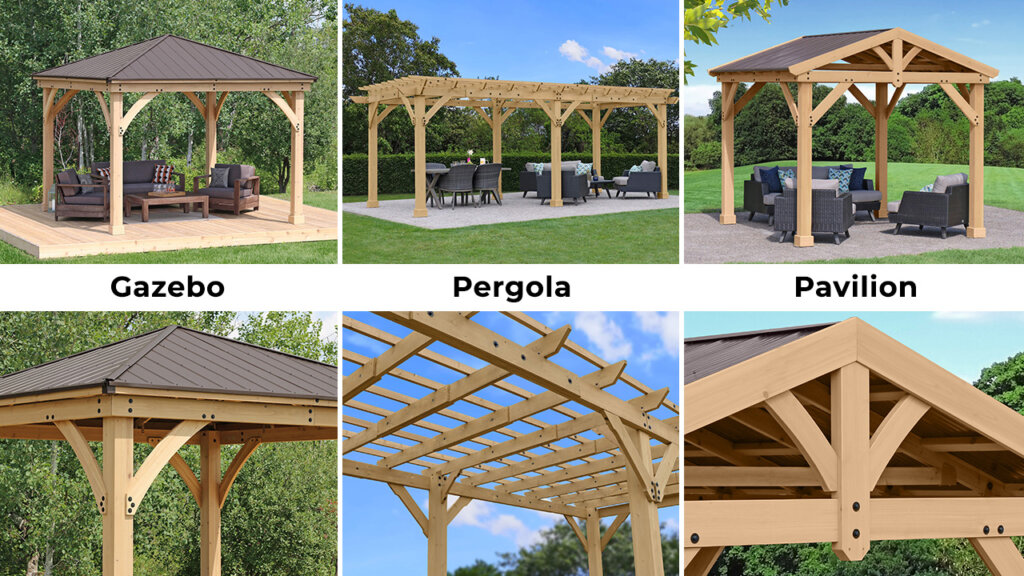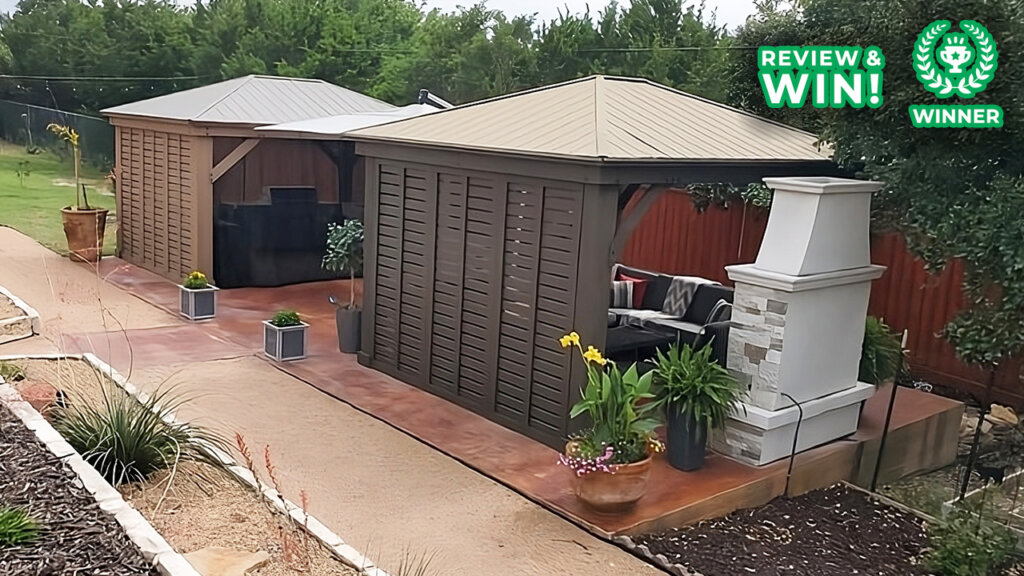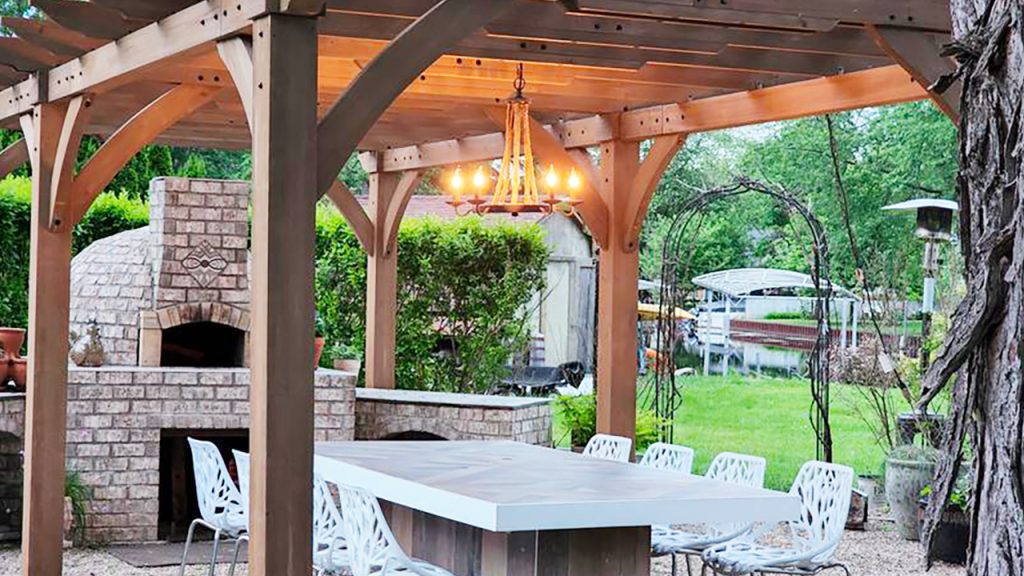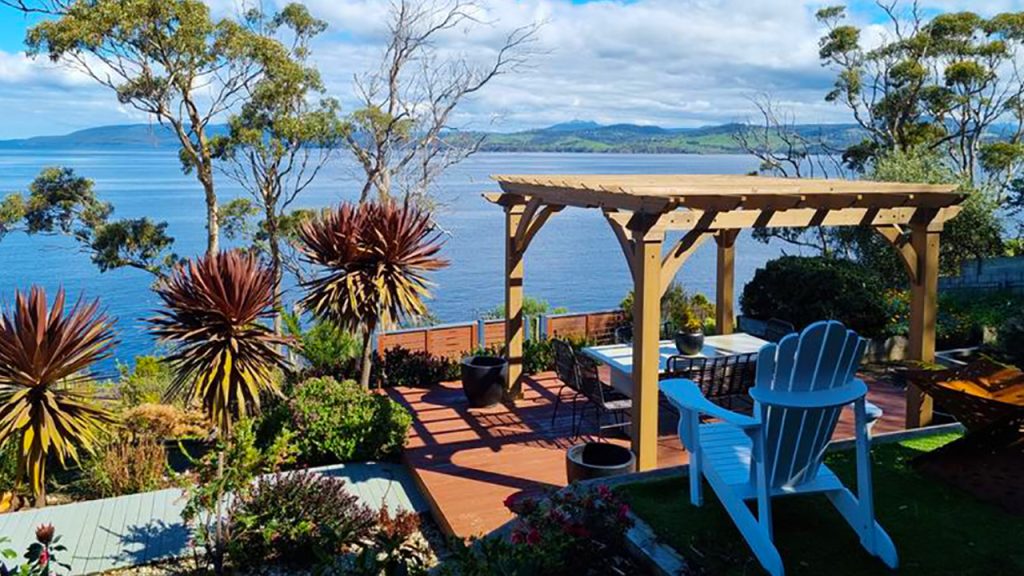– Here is a guest post from John & Bob’s (an organic soil solution company)
Adding a pergola to your garden is a great way to add some structure and shade to your garden. The posts and open roof are perfect for climbing plants to take over and can create the perfect space to shelter from the sun during the summer. However, it’s important to put some planning and preparation in before adding a pergola.
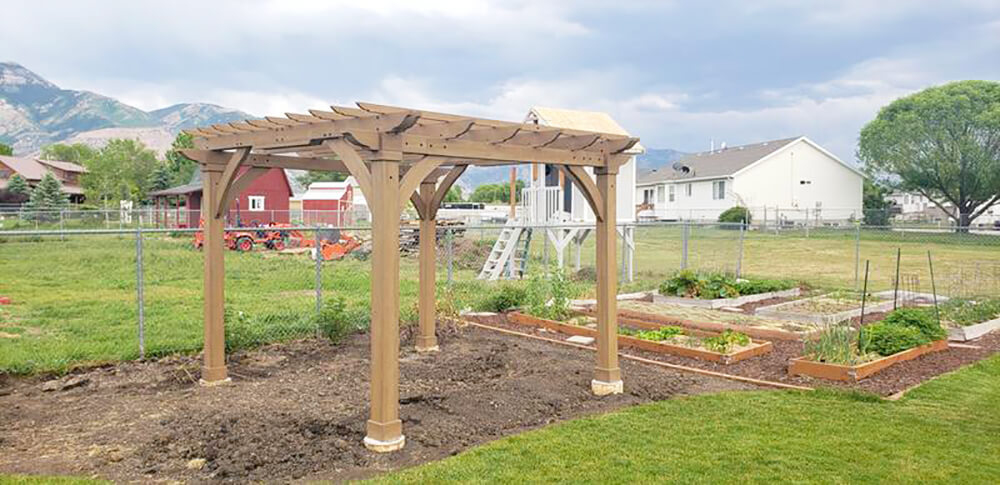
In this article we cover where to place a pergola, preparing the ground, and picking the best plants to grow over it.
Picking the right position
You might already have an idea of where you want to add a pergola in your garden, but there are certain things that you need to consider before making a final decision:
- Choose somewhere level and flat with good drainage — you don’t want it to be built in an area where water collects when it rains heavily.
- Think about how you want to use your pergola — if it’s a space to socialize then pick somewhere central, for outdoor dining you’ll want it closer to the house, but if you want to create a quiet space to escape then pick a more private corner of your garden.
- Do you want to have specific plants growing over your pergola? If so, what conditions do they need?
- What’s growing around the area? If there are young trees that are going to end up overshadowing the pergola it might be difficult for other plants to grow.
- Are there any water, sewer, or electrical lines that run through your business? You need to know this before you start digging holes for the posts.
- Factor in space around the pergola that you might need to access it.
You should also look into any requirements that you might have to follow, such as building codes or homeowners’ association regulations. These often have guidelines on how big a garden structure can be and where it can be positioned in relation to the street or other properties.
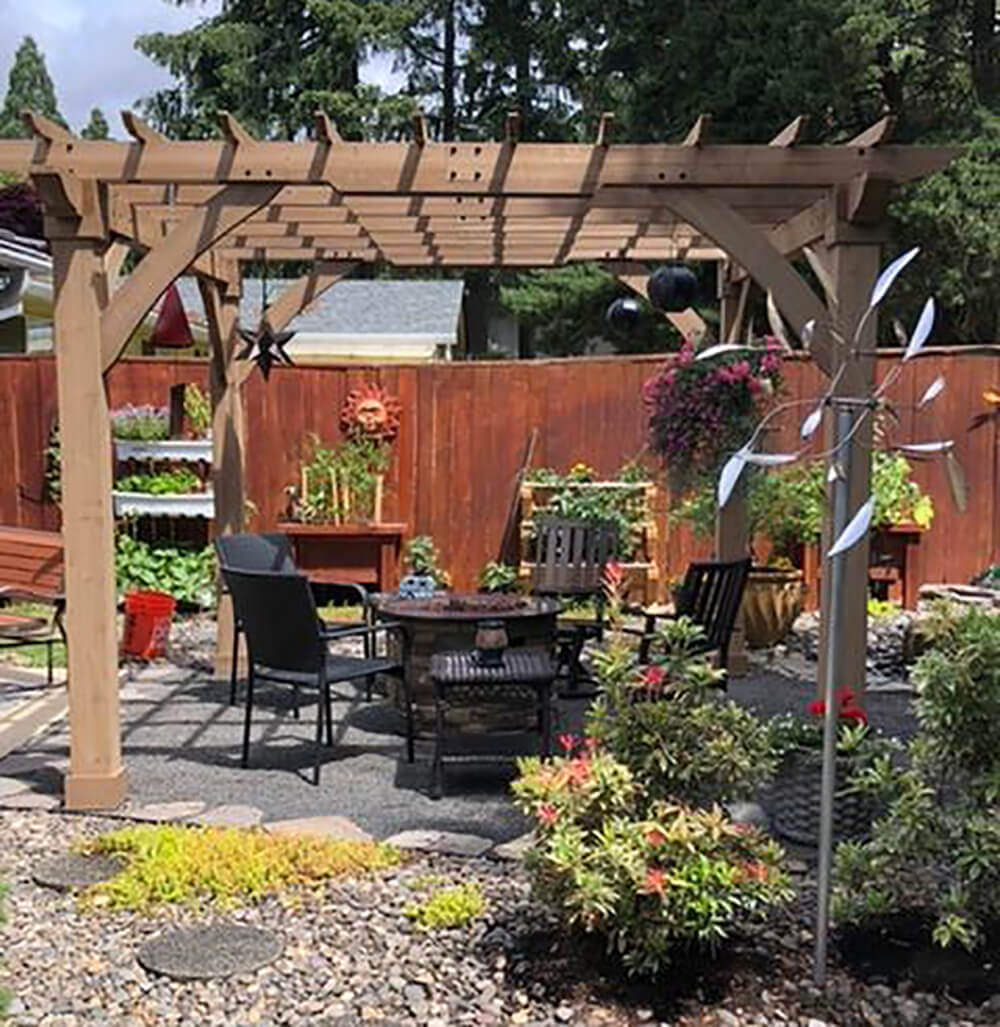
Prepare the ground
You might not have the perfect spot for a pergola, but there are some things you can do to prepare the ground and improve the position that you’ve chosen.
A common problem that people find is that they have clay soil and in many cases, clay soil can be impossible to work with. It doesn’t drain well and causes issues with adding a garden structure as well as growing plants around it. But if you’re looking into how to amend clay soil then there are some options but it will take some time to see a difference.
Another frequent issue is a sloped garden. If it’s only a small slope, you might be able to make adjustments with the foundations, but a significant slope is a bigger problem and you may need to level the whole garden.
Once you’ve prepared the ground then you can start building your pergola.
Growing plants over your pergola
Pergolas are perfect for growing climbing and trailing plants and they can also help the structure blend in with the rest of the garden.
Improve the soil around the base of your pergola by digging it through with some compost. To get good coverage, it’s usually a good idea to plant two climbers at the bottom of each post.
Make sure they’re directed towards the posts when you plant them, you may have to use bamboo canes to support them if there’s a gap. You’ll also need to secure some wire or mesh around the posts for them to grow up, and regularly check on them to keep them wrapping around your pergola.
These are a few of the best plants to grow on a pergola, depending on the climate where you live:
- Climbing roses
- Wisteria
- Honeysuckle
- Jasmine
- Clematis
- Grapevines
- Ivy
- Sweetpeas
You could also grow climbing vegetables such as beans, peas, or tomatoes.
Pergolas make a great addition to most gardens, but it’s important to follow these tips and take the time to plan out and prepare your garden before you start building.
